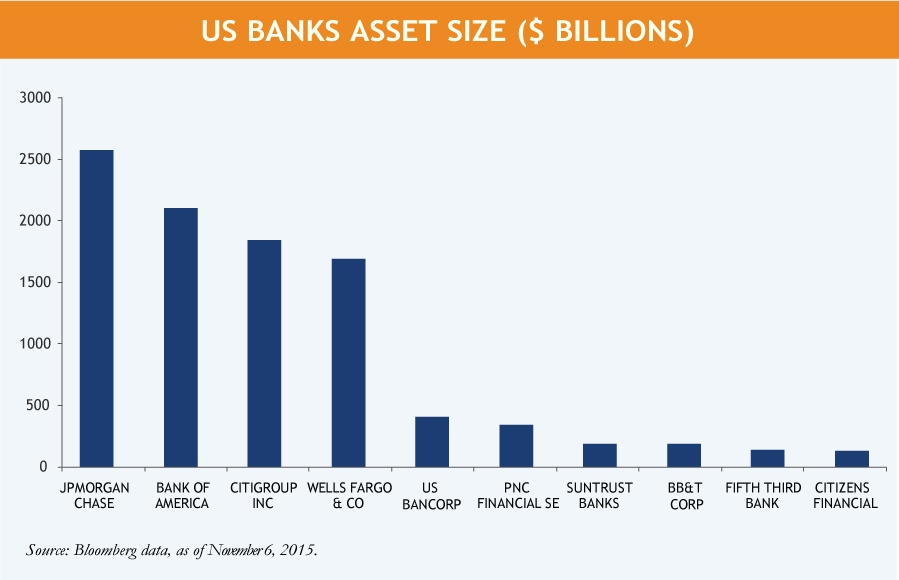The overall mood at the recent US BancAnalysts Association of Boston conference was positive. Many bank CFOs believe that the future for regional bank revenue, which has been growing at barely over 1% for the past three years, looks brighter. Loan growth is picking up and net interest margins are close to bottoming, even before the benefit of interest rate hikes. Interest rate rises will be good for banks, because the interest rates that banks charge for loans will go up faster than the interest rates that they pay for customer deposits. I am taking a more cautious stance as non-performing loan charges may start to increase from very low levels as US interest rates start to creep up next year. I’ve found that many Wall Street analysts have not factored in much normalization of non-performing loans costs in their models. They may have also factored in too much benefit to revenue from interest rate recovery, since I think the Fed Funds rate will only be raised slowly. These two factors lead me to believe that consensus expectations for US bank earnings are too high.
Persistent Headwinds
The shift from branch-based banking to internet banking is the biggest change in how consumers interact with banks since 1969, when ATMs were introduced. For the largest banks, this shift offers both revenue and cost savings opportunities. Customers who use internet and mobile banking have higher customer satisfaction, use more banking products and are cheaper to serve. It enables banks to focus more on sales in their branches. Taking advantage of this trend has allowed Bank of America to reduce its branch network by 10% over the last two years.[i]
Overall, mid-size banks are at a structural disadvantage because they lack the scale to keep up with the largest banks’ investments in internet and mobile banking. The 10th largest US-listed bank, Citizens Bank, has less than 1/10 of the assets and revenues of Wells Fargo. And Citizens barely makes it into the top 100 global banks.
Some smaller US banks are investing heavily to improve their core IT systems, like Zions Bank, but the scale of the challenge is daunting. When the Commonwealth Bank of Australia (CBA) replaced its IT systems in 2008, the project took six years and cost over $1 billion, twice the original budget.[ii] CBA had a matrix of IT systems which were up to 40 years old in some cases. The six years it took to replace CBA’s systems is longer than many bank CEOs’ tenure and involved reputational risk for the CEO, which may put off other CEOs from following the same path.

Many mid-size banks will likely find it extremely difficult to offer omni-channel banking. Interestingly, none of the mid-size banks at the conference offer fully integrated branches, call centers and internet banking – instead they have separate IT systems for each.. Online banking needs to be seamless to succeed. Imagine applying for a car loan on your mobile device, getting stuck and having to call a bank representative for help. Without the technology in place, a representative would have no idea what data you have entered and the task will quickly become exasperating.
Who’s Afraid of Regulation?
Not many attendees at this conference, apparently. There was surprisingly little focus or discussion on capital requirements or potential changes in regulation. This is probably because US banks look well-capitalized.
[i] Source: Bank of America data, as of 11/6/15
[ii] Source: Commonwealth Bank of Australia as of 11/18/2015
MALR014266




